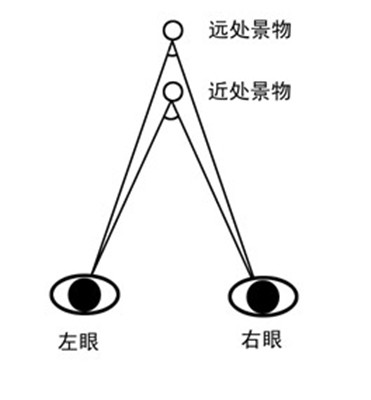(单词翻译:单击)
Parallax is phenomenon by which we can judge the distance to things just by looking at them.
视差是我们目测事物的距离时所产生的现象。
Astronomers use parallax to calculate the distance to stars.
天文学家利用视差来计算我们到恒星的距离。
Do you need a gigantic computer-based observatory to use it?
你需要使用一个庞大的以计算机为基础的天文台吗?
Not at all. Your finger will do nicely.
根本不用。你的手指就可以做得很好。
Put one finger up in front of your face and close one eye, then the other.
放一只手指在你的面前,闭上一只眼睛,然后换另一只眼睛。

Your finger seems to jump back and forth between two positions.
你的手指似乎在两个位置之间来回移动。
That's because the perspective from each eye is slightly different,and your brain combines these images to give you a sense of three dimensional space.
这是因为每只眼睛的角度稍有不同,大脑合成的这些影会给你一种三维空间感。
Notice, however, that the farther you move your finger away the less discrepancy there is between theimages.
但是,请注意,你的手指放得越远,这些图像之间位置的差异就越小。
Parallax must decrease with distance!
视差会随着距离增加而减少。
This is an exciting discovery, because we can now use parallax to judge the distance to objects out in space.
这是一个令人兴奋的发现,因为我们可以利用视差来判断与外太空物体的距离。
Here's how.
下面我们来说说怎样做到。
Because the earth moves around the sun in one year's time, every six months it is as far away fromwhere it was six months ago as it can get.
因为地球围绕太阳公转一圈是一年的时间,每六个月后它的位置离六个月前最远。
That distance is like the distance between your eyes.
这之间的距离就像你两眼之间的距离一样。
Images taken of a far-off object in January can be compared with images of the object in June.
在一月拍摄的远距离物体可与六月拍摄的相比较,
The apparentmotion of the object due to parallax tells us how far away it is from earth.
根据视差所表现的物体的明显运动轨迹能够告诉我们它离地球有多远。
But wait! How do you know that your telescope is pointed in exactly the right direction?
但是等等,你怎么知道你的望远镜是指向的正确的方向?
By aligning itwith the so-called “fixed stars”–stars so far away they show no parallax motion whatsoever.
通过对准所谓的“恒星”-星星如此之远以至于它们没有视差运动的现象。
Against that unmoving background, the closer stars can be picked out.
与静止的背景形成对比,比较近的星星就可以被挑选出来。


